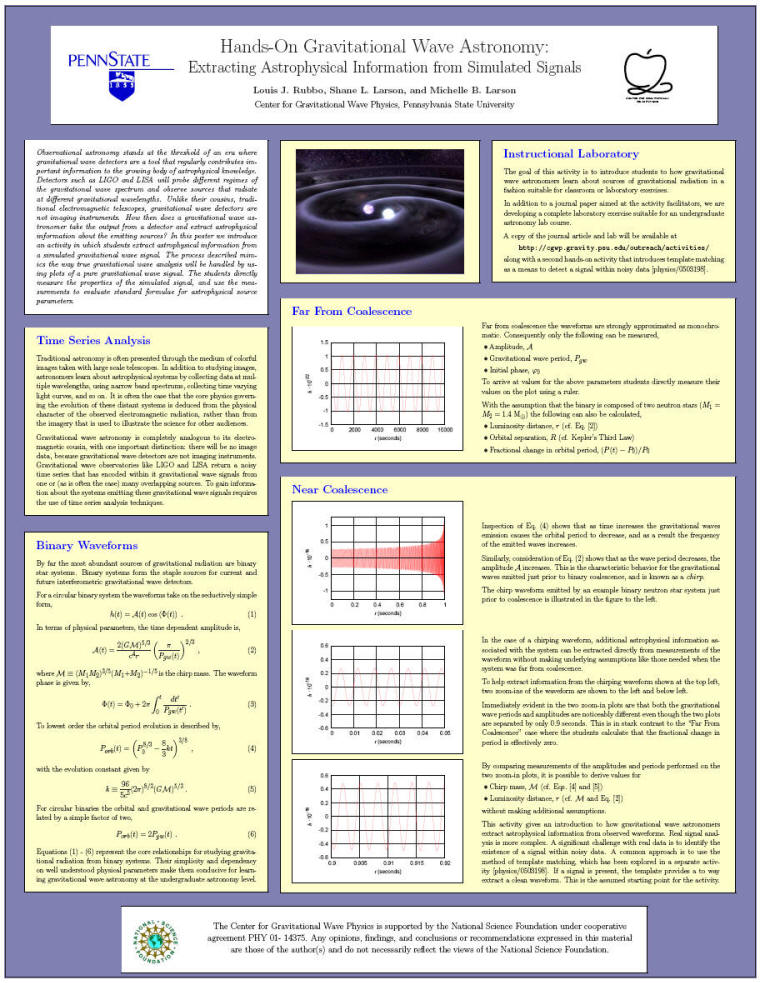![]()
|
|
American Association of Physics Teachers |
|
|
Louis
Rubbo's POSTER from the AAPT Topical Workshop Teaching General Relativity to Undergraduates Held at Syracuse University, July 20-21, 2006 |
|
Observational astronomy stands at the threshold of an era where gravitational wave detectors are a tool that regularly contributes important information to the growing body of astrophysical knowledge. Detectors such as LIGO and LISA will probe different regimes of the gravitational wave spectrum and observe sources that radiate at different gravitational wavelengths. Unlike their cousins, traditional electromagnetic telescopes, gravitational wave detectors are not imaging instruments. How then does a gravitational wave astronomer take the output from a detector and extract astrophysical information about the emitting sources? In this poster we introduce an activity in which students extract astrophysical information from a simulated gravitational wave signal. The process described mimics the way true gravitational wave analysis will be handled by using plots of a pure gravitational wave signal. The students directly measure the properties of the simulated signal, and use the measurements to evaluate standard formulae for astrophysical source parameters. |
Hands-On Gravitational Wave Astronomy: Extracting
Astrophysical Inf
(click below on the poster for the full sized pdf version)  |
|
links: HOME Suggest improvements at AAPT's Wiki AAPT AJP TPT PSRC ComPADRE |